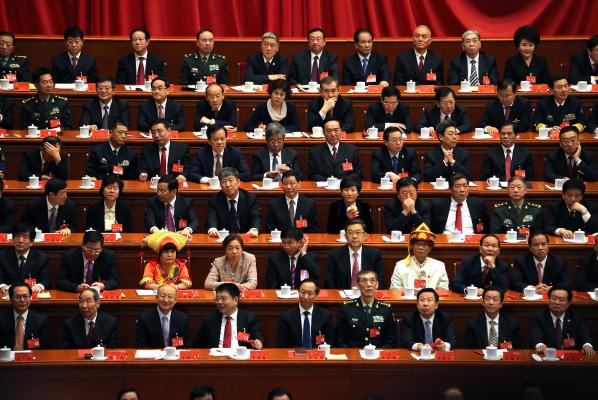
NEW YORK, Jan. 10 (UPI) — Economists who study China said the world’s second-largest economy is poised to grow anywhere between 6.7 to 7 percent in 2018 as consumer sentiment improves and stock markets rally around the world.
Speaking at a National Committee on U.S.-China Relations forum focusing on China’s economic outlook, Qin Xiao, the former chairman of China Merchants Group, said the Chinese economy is likely to reach a 6.7 percent annual rate of growth.
“China’s exports will continue to benefit from a steady global recovery in 2018,” Qin said Tuesday, adding Chinese blue chip stocks are in a position to increase in value as economic fundamentals improve this year.
Huang Haizhou, managing director of China International Capital Corporation, offered a higher 7 percent rate of forecasted growth, an estimate that might have struck other analysts at the forum as excessively optimistic.
Nicholas Lardy, senior fellow at the Peterson Institute for International Economics, said underlying inefficiencies are hampering growth.
“Very important legacy issues are slowing down China’s growth rate,” Lardy said. “We have a situation where 40 percent of state-owned companies can’t cover the cost of capital. They’re losing money.”
“There’s still a major problem of misallocation of resources.”
Beijing’s 19th Party Congress also demonstrated mixed commitment to further privatization, according to the U.S. analyst.
“Xi’s speech was a disappointment for those who were looking for implementations of the third plenary reforms of the 18th Party Congress in 2013,” Lardy said. “On the other hand the constitution was revised to include that third plenum language about the market being the decisive force in the allocation of resources.”
Nearly all analysts agreed China is committed to privatization but still struggling to achieve efficiency.
Lu Feng, the director of the China Macroeconomic Research Center at Peking University, said Chinese leaders have clearly indicated the country is moving toward a more market-oriented economy, but issues remain.
“China is still transitioning, with legacy from the command economy,” Lu said. “Two steps forward one step back, because we are trying to solve the problem of how to make China a more market-oriented model. That is an experiment no one has ever done before.”
But Lardy said he sees greater government intervention and an increasingly weak privatization movement linking up in a convergence of trends.
“Over the last five years, we’ve witnessed a greater role for the state, a greater role for state-owned enterprises, more intervention in the economy,” he said. “The private sector has weakened over this period.”
Lardy attributed the trend to government policy that has allowed credit to “flow disproportionately” to state-owned companies, “particularly over the last five years.”
Chinese authorities undertook the measure in the wake of the 2008 financial crisis, Lardy said, because “this was the quickest way to maintain rapid economic growth.”
“It was the wrong decision. A lot more growth [could have been achieved] out of the private sector through liberalization,” Lardy said.
“Returns are so much higher for private firms.”
The analyst said the best example of privatization’s benefits could be found in the manufacturing sector where private companies account for 80 percent of investment.
“State companies are only doing about 10 percent” in manufacturing, he said, an example for other parts of China’s economy.
“In the service sector the role of state companies is about five times higher, and they have terrible returns, less than 2 percent,” the analyst said.
“Liberalize the service sector.”






